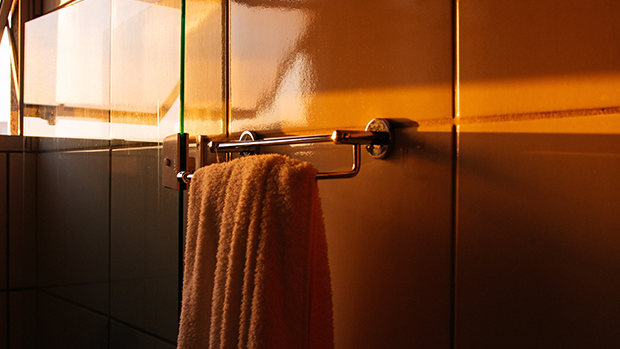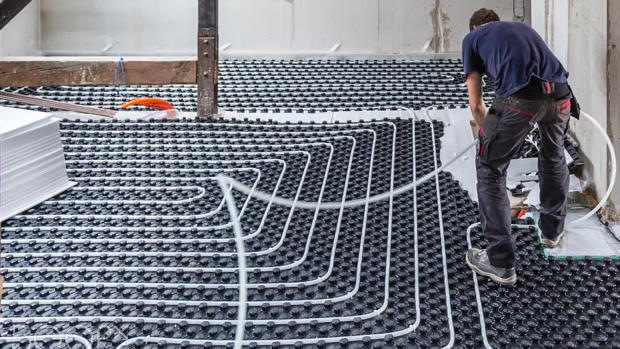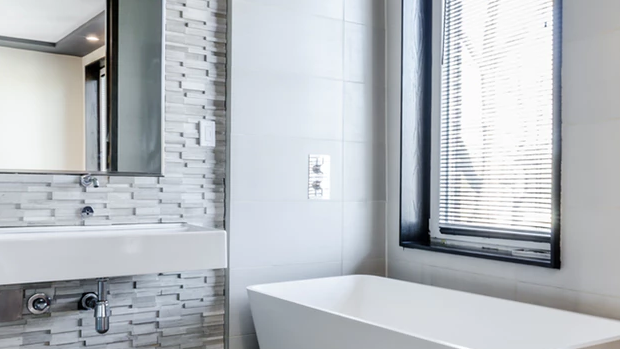Whether you’re undertaking a bathroom renovation, or looking for ways to warm up the room, take some of these options into consideration.

Heated towel rail
In the past, luxurious features could only be found in hotels. But today, fixtures like a heated towel rail have become a common sight in many homes.
Many people don’t give much thought about their towel rails. They simply think of it as a place to hang their wet towels. Nonetheless, when the rainy season comes, they have to deal with towels that are not fully dried after washing or use and give off an unpleasant odour. Additionally, damp towels can harbor harmful bacteria which in turn can pose risks to you and your children.
If you are considering installing a heated towel rail, you have three options to choose from.
- Centrally heated towel rail – This towel rail functions by being attached to your central heating, giving you the advantage of having a fully dried and warm towel without having to spend additional costs towards powering it.
- Electric towel rail – This towel rail is powered by electricity, meaning that it can be used even when you are not using your central heating system.
- Dual fuel towel rail – This type of towel rail can be used either by attaching it to the central heating system or simply plugging it in.
Insider tip:
While it is safe to leave heated towel rails on, it is advisable to install a thermostat alongside it to help you save on energy bills. A thermostat allows your towel rail to power up a few minutes before your family members start taking a bath and shut itself off once your kids have left for school and you and your spouse have gone to work.
Towel rails powered by central heating can sometimes be easy to install yourself. However, if you want a dual fuel or electric towel rail installed, you will have to hire the services of a qualified electrician with experience in installing electrical equipment.

Heated flooring
The modern home bathroom has indeed come a long way. Decades ago who would have thought you could have a shower and step out onto a floor that was heated!
If you are considering underfloor heating, there are two options to choose from.
- Dry system – The floor is heated with electrical wiring.
- Wet system – The floor is heated with hot water pipes.
A heated floor will need the services of a professional electrician and can be more expensive than other bathroom heating options. However, it is inexpensive to run making it a sound investment especially for those who really feel the cold!
Heated flooring is also a great option for the minimalist. If your bathroom is small in space, you’ll typically be wanting to take a minimal approach to maximise room making an underfloor heating option the perfect solution. Not only will you have heating underfoot, you’ll also be able to bring up the temperature of the room.

Bathroom heat lamps
During the cold season you will have to contend with the cold air when you step out of the shower. Bathroom heat lamps are a great solution to combat the winter chill.
Most heat lamps use quartz (instead of using tungsten filaments often found in ordinary light bulbs) which have a resistance to electricity. In turn, this allows the heat lamp to produce ample amounts of infrared radiation which can provide heat to people coming out of the shower.
Aside from the benefit of heat, these lamps also provide light. Additionally, homeowners can benefit from them because the person coming out from the shower does not have to suffer from a sudden transition in temperature, from hot to cold, which can make the person vulnerable to colds, coughs and headaches.
Generally, there are four types of heat lamps you can install in your bathroom or shower room.
- Overhead heater – These heat lamps are installed in the ceiling and best suits smaller bathrooms because they do not necessarily consume much space.
- Freestanding heat lamps – This type of heat lamp does not need to be installed or mounted and can be taken out of the bathroom when you are not using them.
- Baseboard heaters – Baseboard heaters come in both large and small sizes and can be a good pick if you have a larger bathroom.
- Under floor heaters – If you like the feeling of a warm floor after coming out of the shower these are the best option.
Ideally, a heat lamp is installed in a place where you can comfortably stay whilst trying to get or keep warm. Take note that extended time staying under the heat lamp can harm your skin. Heat lamps can also make your bathroom uncomfortably hot, particularly if you are using it for an extended period. Before installing one, make sure your bathroom has good ventilation and your heat lamps can be placed in an area that is far from moisture.
Bathtub that retains heat
Did you know, you can actually purchase bathtubs that retain the heat? There are certain materials you can choose from that will help keep your bathwater warm a little longer. These are:
- Brass
- Cast iron
- Copper
- Soapstone
- Volcanic limestone
You can also make sure you have the correct insulation for the tub to retain heat just that little bit longer!

Take advantage of natural light
Natural light is a great way to keep your bathroom warmer during the winter months. Where possible, have a skylight installed to let the natural light in from above. Not only will a skylight keep your bathroom warmer, a bright room is also a great way to lift your mood.
Other benefits of a skylight include:
- Making the bathroom appear larger than it really is.
- Can be installed in a day.
- Reduced energy costs as they let heat in from the sun.
A fireplace in the bathroom
One of the more luxurious bathroom heating options is a fireplace. While less common in the everyday home, it can be done and is a popular fixture among luxury homes worldwide. Imagine sitting in a bathtub with the relaxing sound of flickering flames in the background.
It’s important to remember an electric fireplace should never be installed in a bathroom. You can however opt for a gas fireplace with a direct-vent, eliminating the need for a chimney.
A bathroom heater
If a bathroom fireplace is a little too extravagant for your liking, a bathroom heater is the next best thing! Being able to heat the room before a bath or shower is one way to keep the room feeling warm and toasty.
To ensure your heater is safe for the bathroom, talk to your electrician about installation and product options.
Considering your bathroom heating options
Getting the best advice on purchase, installation and running costs will help you make your decision effectively. If you are considering any of these bathroom heating options, contact Everest Electrical today.


